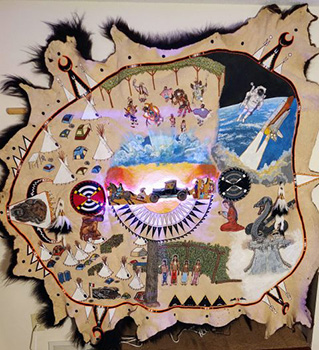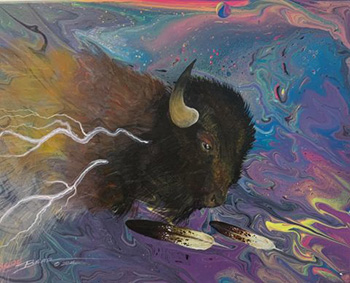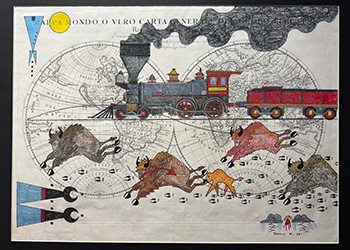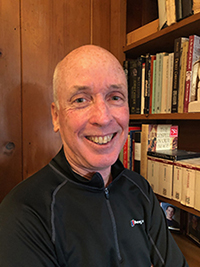From Our Archives
For earlier essays on this week's RCL texts, see Dan Clendenin, Haggai and the Politics of God (2022); Debie Thomas, Children of the Resurrection (2019); Dan Clendenin, A Generous Dispenser of Divine Mercy: The Canonization of St. Teresa of Calcutta (2016) and This Age, That Age: Sex and the Sadducees (2013).
This Week's Essay
By Amy Frykholm, who writes the lectionary essay every week for JWJ.
Psalm 145:18: “Your goodness seeps into every hidden place for those who call you in their heart’s truth.”
For Sunday November 9, 2025
Lectionary Readings (Revised Common Lectionary, Year C)
Psalm 145:1–5, 17–21 or Psalm 98 or Psalm 17:1–9
2 Thessalonians 2:1–5, 13–17
Luke 20:27–38
The unassuming farmhouse in Boulder County, Colorado, a hundred miles northeast of where I live, doesn’t look like the center of a revolution. It sits among cottonwood trees, pale yellow, weary-looking, unoccupied.
But from this place, a group of native and non-native people from a network of organizations and local government are envisioning a radical experiment for a new kind of partnership. They want to return the buffalo to this small corner of Colorado and with the buffalo, people from the Cheyenne and Arapaho nations, who currently live in Oklahoma.
The buffalo and the Cheyenne and Arapaho nations all left Colorado at the same time and through the same mechanisms: war, slaughter, and exploitation. In 1850, 48 tribes lived in the land that is now Colorado. After the Sand Creek Massacre of 1864 and two proclamations by the territorial governor John Evans that encouraged non-native Coloradans to “pursue and kill” native people who refused to go to reservations, the number of native people in Colorado diminished rapidly.
Untold numbers of buffalo vanished at the same time by wholesale slaughter. The U.S. military generals who ordered the killing of the buffalo intended to use the extermination of these animals to drive tribal people from the land. In 1868 Lieutenant Colonel Luther P. Bradley wrote in his private journal that he had been ordered “to kill all the buffalo we find, and drive the Arapahoes and Cheyennes south, and the Sioux north.”
The plan worked, and for more than 100 years there have been few buffalo in Colorado and only a small remnant of the diverse peoples who once called Colorado home.
 |
|
Dallin Maybee (Arapaho/Seneca), Light Bison Robe (c.2021).
|
So when Fred Mosqueda (Arapaho/Cheyenne) looks at the farm land in Boulder County his vision for the place requires a kind of seeing that might have been familiar to the prophet Haggai. Mosqueda, like Haggai, is looking on a place that his ancestors called home, and it doesn’t look like much. Haggai acknowledges how difficult it is to see beyond the present. “Who is left among you who saw this house in its former glory?” he asks. “How does it look to you now? Is it not in your sight as nothing?” (Haggai 2:3).
Like Haggai, Mosqueda feels charged with the possibility of restoring a sacred relationship. The people at the time of Haggai had to restore not only the temple building, but also a relationship with that place. They had to recover old understandings while not being bound by those understandings alone — peering into the future, while honoring the past.
The sacred relationship that Mosqueda intends to restore is the relationship with the buffalo, the animal who accompanied his people for generations. Rick Williams (Cheyenne/Oglala Sioux), who founded an organization called People of the Sacred Land, notes that the relationship with the buffalo is key to restoration. “When the buffalo do well, we will do well,” he told Colorado Public Radio. “And so if we can help bring buffalo back, we will help bring our people back.”
This inspiration for a corner of Boulder County is a comprehensive economic, geographic, and ecological vision that could perhaps pave the way for similar partnerships and experiments. But to see it requires a kind of sacred sight.
“Once again, in a little while,” God says through Haggai, “I will shake the heavens and the earth and the sea and the dry land, and I will shake all the nations, so that the treasure of all nations will come, and I will fill this house with splendor” (Haggai 2:6-7).
 |
|
Eugene Ridgely, Jr. (Northern Arapaho), Thunderhead (c.2021).
|
After Cyrus of Persia conquered Babylon in 539 BCE, he issued a decree that allowed Israel’s exiles to return to their homeland. A “remnant of the people” (Haggai 2:2) makes this attempt, but they return to a devastated place, and their attempts to restore the temple run into all kinds of trouble. In order to see what Haggai sees, the people must learn to see beyond the present moment. They must honor the past, acknowledge the devastation of the present, and imagine a future.
What kind of vision does it take to look at a farmhouse in Boulder County and see, as Mosqueda does, the possibility of a renewed relationship between buffalo and human on that land, to see the return of a remnant, and the hope of flourishing? It also requires seeing beyond today's nihilistic politics toward a different kind of civil society.
Haggai’s prophecy says “latter splendor…shall be greater than the former.” It’s just this kind of possibility that Mosqueda is counting on — and not for himself, but for generations he cannot yet know. “It is going to be the young people that live here,” Mosqueda says. “It is going to be the young people that's going to maybe actually get the rewards of what we're trying to begin here.”
 |
|
Dallin Maybee (Arapaho/Seneca), Change Came to the Buffalo Nation, 1674 World Map.
|
While the context is quite different, the Gospel of Luke also addresses the ability to see an alternative vision. In Luke 20 the Sadducees ask Jesus a trick question meant to reveal the impossible logic of the resurrection: if a woman marries seven men and has no children by any of them, whose wife is she after the resurrection?
Jesus doesn’t answer the question based on the question’s own internal logic — the particularities of cultural possession and relation. Instead he says there is a way of being and seeing outside of these paradigms, where these rules don’t apply. The people who belong to this alternative are “children of the resurrection,” and children of the "God of the living.” It’s not so much that former rules are broken as that they cannot be applied.
To be a child of the resurrection means being able to see what others can’t. It means being able to look at a small corner of the earth and see the possibility of something new. It means re-establishing older means of relation and connection in new contexts.
To see as Jesus sees, not as children of “this age” but as “children of the resurrection” (Luke 20:36), requires sacred sight, a transformation not only of the land, but also of the heart.
Weekly Prayer
Haudenosaunee Thanksgiving Address: Greetings to the Natural World (selection)
The People
Today we have gathered and we see that the cycles of life continue. We have been given the duty and responsibility to live in balance and harmony with each other and all living things. So now, we bring our minds together as one as we give our greetings and our thanks to one another as people.
Now our minds are one.
The Earth Mother
We are all thankful to our Mother, the Earth, for she gives us all that we need for life. She supports our feet as we walk about upon her. It gives us joy that she continues to care for us as she has from the beginning of time. To our mother, we send our greetings and our thanks.
Now our minds are one.
The Waters
We give thanks to all the waters of the world for quenching our thirst and providing us with strength. Water is life. We know its power in many forms — waterfalls and rain, mists and streams, rivers and oceans. With one mind, we send our greetings and our thanks to the spirit of Water.
Now our minds are one.
The Plants
Now we turn toward the Plants. As far as the eye can see, the Plants grow, working many wonders. They sustain many life forms. With our minds gathered together, we give our thanks and look forward to seeing Plant life continue for many generations to come.
Now our minds are one.
...The Animals
We gather our minds together to send our greetings and our thanks to all the Animal life in the world. They have many things to teach us as people. We are honored by them when they give up their lives so we may use their bodies as food for our people. We see them near our homes and in the deep forests. We are glad they are still here and we pray that this will always be so.
Now our minds are one.
…The Wisdom Keepers
We gather our minds together to consider the Wisdom Keepers who have come to help the people throughout the ages. When we forget how to live in harmony, they remind us of the way we were instructed to live. With one mind, we send our greetings and our thanks to these caring teachers.
Now our minds are one.
The Creator
Now we turn our thoughts to the Creator, Shonkwaia’tîson, and send our greetings and our thanks for all the gifts of Creation. Everything we need to live a good life is here on this Mother Earth. For all the love that is around us, we gather our minds together as one and send our choicest words of greetings and thanks to the Creator.
Now our minds are one.
We have now arrived at the place where we end our words. Of all the things we have named, it is not our intention to leave anything out. If something has been forgotten, we leave it to each individual to send their greetings and their thanks in their own way.
And now our minds are one.
This translation of the Mohawk version of the Haudenosaunee Thanksgiving Address was drawn from the 1993 version that was developed by the Six Nations Indian Museum and the Tracking Project. The full version can be found here.
Amy Frykholm: amy@journeywithjesus.net
Image credits: (1, 2) Museum of Boulder and (3) Raven Makes Gallery.





